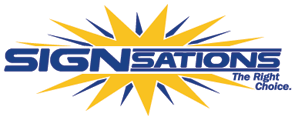
Intro
When it comes to office environments, every detail counts. One often overlooked aspect of office design is the office door signs. These signs serve a practical purpose by indicating room numbers and names but also play a crucial role in reflecting the overall brand image of the company. In this blog post, we will explore the importance of having clear and effective office door signs, how they can reflect your brand, the importance of choosing the right material and design, the role of accessibility, and the need to keep them updated
The Importance of Clear Messaging in Office Door Signs
It should be easy to navigate an office. But when signs are not clear or overly complex, it can lead to confusion. A well-thought-out sign does more than just mark a space; it ensures that everyone can find their way. Achieving this requires attention to detail so that the signs are easily understood. This not only aids in easy navigation but can also reinforces the company's image and the experience employees and visitors have while conducting business.
Reflecting Your Brand Through Door Signage
Your company's identity is subtly communicated through every office detail including the door signs. These small features serve to reinforce the look and feel of the company. Through careful selection of colors, fonts, and logo, you can reinforce the brand experience that begins the moment someone steps onto your premises. This ensures that every door is a statement of who you are as a business.
Choosing the Right Material and Design for Durability and Aesthetics
Selecting the right materials and design for your signs ensures ease of maintenance, and prolonged sign life all while looking new for years to come. Materials such as metal, acrylic, or wood, offer durability with flexibility to adapt to various design requirements. You should also consider the environmental conditions of your office, such as lighting, humidity, and traffic flow, to choose a material that not only endures but also complements these factors. The design element of your door signs should integrate with the existing office décor. Opt for designs that compliment your brand yet will maintain a professional look for years to come.
The Role of Accessibility in Office Door Signs
In designing office door signs, prioritizing accessibility ensures that every individual, regardless of their physical capabilities, can navigate the workspace with ease. This includes installing signs at a standardized height to cater to both standing adults and those in wheelchairs, ensuring visibility and inclusivity. The use of high-contrast colors for text and background is crucial for those with low vision, making the signage discernible at a glance. For individuals who are blind or have low vision, integrating tactile elements such as braille is a step toward creating an environment that supports independence and dignity. ADA compliance is not just a regulatory requirement but a commitment to inclusivity. By considering these principles in the design of door signs, companies demonstrate a commitment to a workplace that accommodates the needs of all employees and visitors, fostering an atmosphere of accessibility and inclusion.
Keeping Office Door Signs Updated: A Continuous Process
As businesses evolve, so too must their physical spaces, including the small but significant elements such as office door signs. Staying current with signs is crucial for a host of reasons. They should be integrated into the office maintenance routine with a periodic review for potential updates due to room reassignments, personnel changes, or even a refresh in the company’s branding strategy. Regularly scheduled audits of signage can preemptively address any discrepancies before they become problematic, maintaining the integrity and functionality of your office’s navigational aids.
Summary
Ultimately, the impact of office door signs extends far beyond mere functionality. They are a critical component in shaping the visitor and employee experience. Through careful consideration of messaging, design, material selection, and ongoing updates, these signs become more than just informational tools; they reflect the culture of the company. By prioritizing these elements, businesses can ensure their door signage effectively communicates the intended message, reinforces the company's identity, and fosters a welcoming, inclusive environment. Ensuring your signs reflect this attention to detail and care can significantly influence the perception and functionality of your office space.
